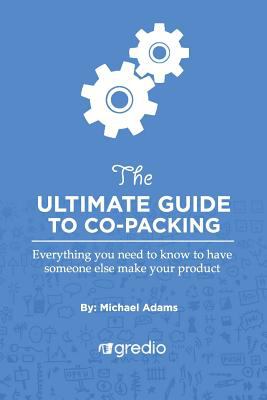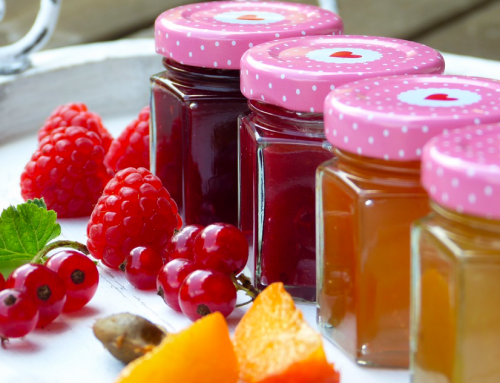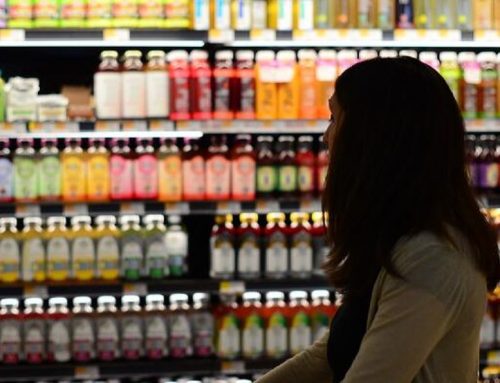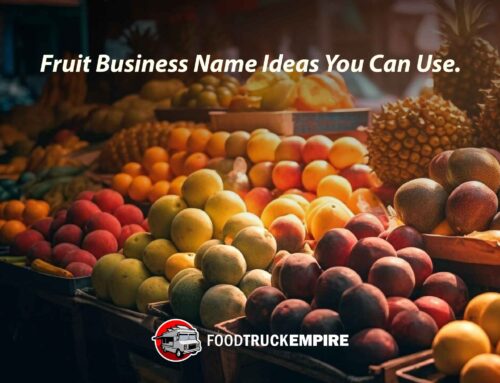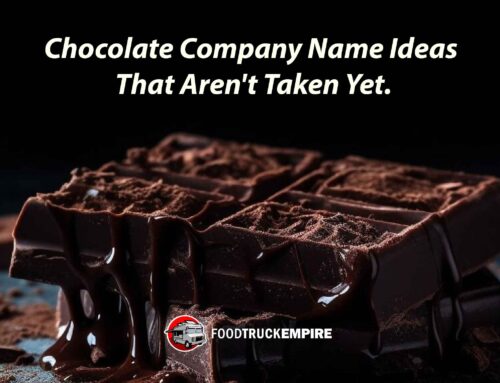This is the blog post you need to calculate your food product cost and make sure you’re making money, too. I’ll walk everything included in your cost of goods sold and how to calculate it. Then we’ll walk through how to price your product in different sales channels like grocery stores or distributors.
Oh, and examples. Because nothing with numbers makes any sense without examples. To track the costs of producing each food item, you may also find it beneficial to download our free food cost and pricing spreadsheet. Here we go.
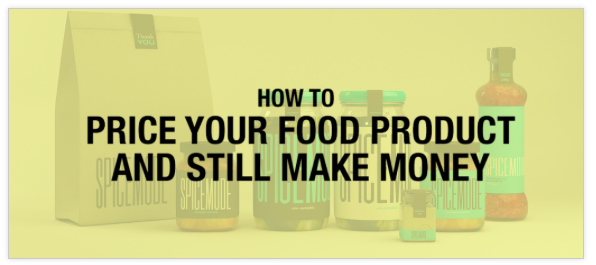
How to price your food product and still make money.
What’s included in your cost of goods sold?
Simply put: Anything you do or use to produce a finished product goes into your final product cost. Some people include all the overhead of a business in your cogs, but I won’t here because many of you are just starting out. Here’s a short list of what absolutely needs to be included:
- Your ingredients (plus shipping)
- Your packaging – plus shipping (jars, bags, boxes, labels, string, etc)
- Your labor (even if you produce in your own house – more on that later)
Why include shipping?
It’s part of getting that ingredient to your kitchen. Here’s an example of how much shipping makes a difference. You order a 50# bag of flour for $50 – $1/pound. But, it costs you $25 to ship the flour. Your $1/pound flour skyrockets to $1.50/pound.
That ultimately increases your product cost. That’s why manufacturers order enough raw materials to get free shipping or spread shipping across more items by increasing the order size.
Why include your own labor?
If you’re making products in your house, you have to include labor because, if you don’t, you’ll lose most of your gross margin when you you move to a shared-kitchen or co-packer. For example, if it takes you an hour to make 12 jars of jam, and you “charge yourself” $15/hour, you’ve got $1.25 just in labor cost.
Pro Tip: Keep track of changes in your cost of goods sold (COGS) using this spreadsheet. When your ingredients, packaging, and labor increase (or decrease, if you’re lucky). your total product cost changes, too. In some cases, you’ll swallow the increase. In other cases, you’ll have to increase your prices. And don’t be afraid to increase your prices.
Let’s look at an example, now. I’ll use Michael’s Lemon Blueberry Jam as an example:
Michael’s Lemon Blueberry Jam – Ingredient cost
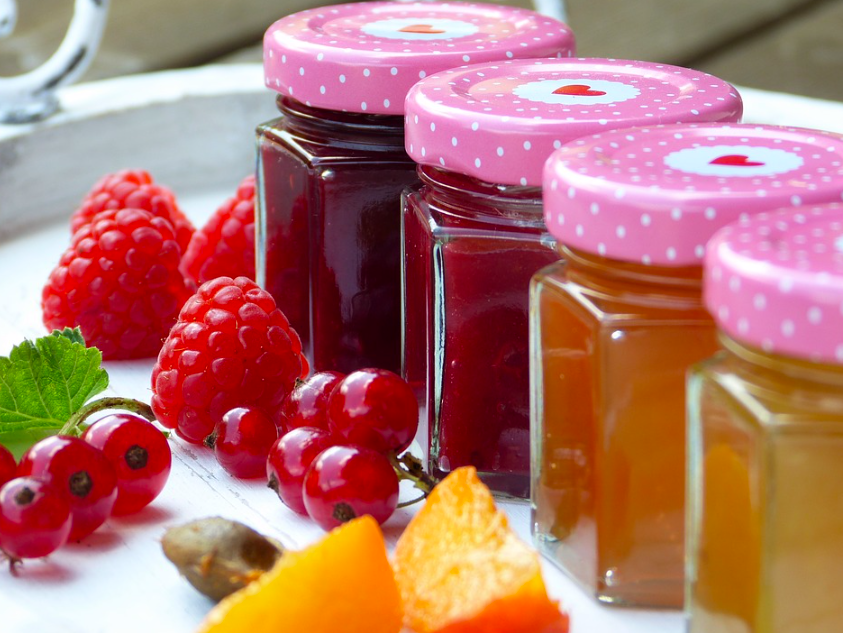
Example pricing for jam and jelly.
(Note: I’m using fictitious numbers)
| Ing | (#) | Price | Grams | /Gram | Amt | Cost |
|---|---|---|---|---|---|---|
| Berry | 50 | $175.00 | 22,680 | .008 | 200 | 1.54 |
| Zest | 5 | $57.90 | 2,268 | .026 | 10 | 0.26 |
| Pectin | 5 | $35.70 | 2,268 | .015 | 25 | 0.39 |
| Sugar | 25 | $19.50 | 11,340 | .001 | 350 | 0.60 |
The total cost of ingredients is $2.79/recipe. This recipe makes 12 jars of jam. That means your ingredient cost is $0.23/jar. Now, let’s look at packaging.
I’m packaging my Lemon Blueberry Jam in a glass jar with a silver lid and a label. Let’s look at each component.
Glass Jars:
- 2,400 jars
- $1,896.00 + $300 in shipping
- Total cost = $2,196.00 / 2,400 jars
- Cost/jar = $0.91
Lids:
- 2,400 lids
- $300 delivered
- Total cost = $300 / 2,400 lids
- Cost/lid = $0.13
Labels:
- 5,000 labels
- $250 printing
- $75 in plates
- Total cost = $325 / 5,000 labels
- Cost/label = $0.07 (rounded)
TOTAL: $1.11/jar in packaging costs.
So far, our total product cost is $1.34/jar — and we haven’t even added labor yet! Pretty crazy, huh? Let’s look at labor:
Labor costs: Let’s take the example above, but increase your production capacity.
- 250 jars
- Produced in 4 hours
- 1 person at $15/hour
- Total labor: $60
- Labor/unit: $0.24
Total Product Cost: $1.48/jar
Let’s review. If you held a jar of Michael’s Lemon Blueberry Jam in your hand, it would cost you $1.48. That includes ingredients, packaging, and labor.
Now, you’ve got the fun part — pricing your product through distribution. That means broker (even if you don’t have one), distributor, retailer, and finally, the end consumer – the price on the shelf.
Related Reading: 25-Step Plan to Making Your Food Company a Reality
How much do you think your $1.48 jar of jam is going to be on the shelf? Let’s find out.
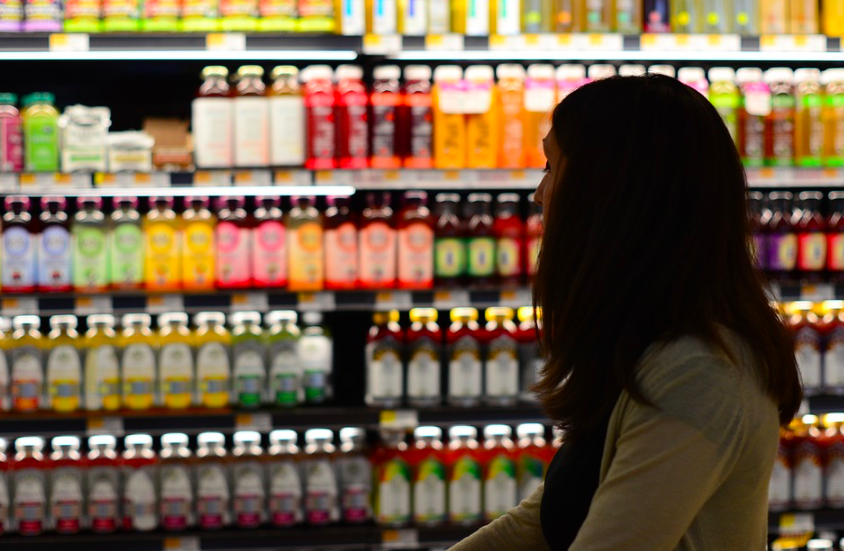
Make sure you’ve built margin into your product.
The food industry works on margin, not markup. You can read about the difference here. Before you send your jar of jam through distribution, you’re going to want a 40-60% margin. Here’s how to calculate your margin:
Price to distributors = COGS / (1 – margin %)
Here’s how your price changes with different margins:
- 40% margin: $2.47
- 50% margin: $2.96
- 60% margin: $3.70
That’s a difference of $1.23, depending on which margin you choose. You want a high margin so you have room to fit a broker’s free of 5-7% into your cost structure. Plus, you want to have room for promotions when you start using larger distributors.
For simplicity’s sake, we’ll say you’re going to have a 50% margin. That means you’ll sell your jam to a distributor for $2.96/jar. Now, let’s look at what your distributor would sell your jam to their retail accounts for….
Distributors usually take another 30% margin.
- Price to retailer = $2.96/ (1 – margin %)
- Price to retailer = $2.96/(1-0.3)
- Price to retailer = $2.96/0.7
- Price to retailer = $4.23/jar
This means a couple things. This is the price a distributor sells your jam for to a retailer. And, more importantly, this is the price you sell your jam to a retailer. Don’t give them a special price. Give them the price your distributor would give them. Now, this cost goes up, if the distributor has to factor in shipping. Let’s take a look:
- Price to distributor: $2.96
- Shipping 1,000 units costs $200
- Added shipping cost/unit: $0.20
- Total cost to distributor: $3.16
- 30% margin = $4.51 price to retailer
See how that adds $0.28 to your wholesale cost with some simple shipping? Pretty crazy. Now, let’s take the non-shipped cost to a retailer to see what price they’ll sell your product for.
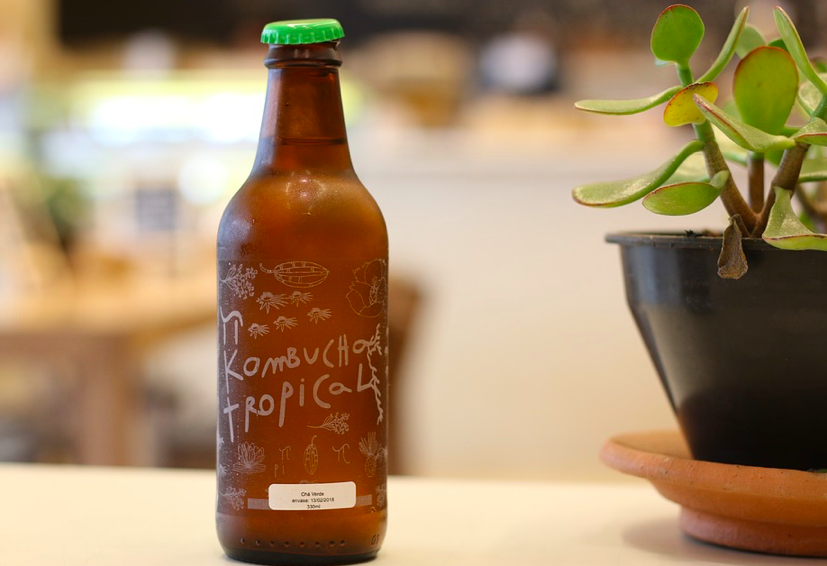
The pricing process is the same for food and beverage products.
Depending on the retailer, they’ll take another margin of between 30% (big grocery) – 50% (high-end gift shop). Here’s how all the margins play out:
- Price to retailers: $4.23
- 30% margin: $6.04 ($5.99 retail)
- 40% margin: $7.05 ($6.99 retail)
- 50% margin: $8.46 ($8.49 retail)
See how your jar can retail for anything between $6 and almost $9 depending on where your product is sold. That’s pretty wild, isn’t it? Your jar of jam that costs you just $1.48 retails for an average of $7.18?
Founder Story: How I Sold over 1 Million Protein Bars
Don’t think for one second that that’s too expensive. You make a super-premium product. It demands a higher price than everything else on the grocery store shelf. After all, you’ve got to make enough money to put food over the table, a roof over your head, and clothes on your kids. The more money you can make, the better. (Yes, it is about the money in the food industry).
And the high price tag is what you charge your customers when you do a farmer’s market, fair, or event. That’s why events are so great – your margins are sky high and it’s great marketing – a win-win, if you will. Where else can you make $5.52 per jar in gross profit (that’s profit before operating expenses)?
Viewed differently it would be as if you took a 60% margin, your distributor took 30% and high-end retailers took 50%. In that scenario, your jar of jam would retail for a whopping $10.57! Whoa, baby!
A quick note about testing your price…..
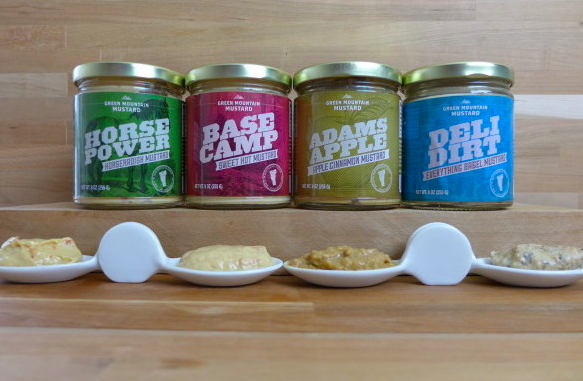
It took some trial and error to find the right price point for my mustards.
Will consumers pay for a $12 jar of jam? Maybe. You’ll have to find out. Or, does 4x the jam move when it’s $3.99? No one will know until you test your pricing. And if you find consumers will pay less, you might want to see if you can cut your costs down. With that being said, you still need to make money. A higher price point may be the only option for now.
A little tweak goes a long way……
After you’ve established pricing, you should focus on decreasing costs. That usually means buying more ingredients in bulk, glass by the pallet, or increasing the number of units you can produce in the same amount of time.
Let’s look at how much more profit you’ll make if you decrease your cost just $0.10/unit.
- Cases sold per month: 400
- Units per case: 12
- Total units per month: 4,800
- Monthly savings: $480
- Yearly savings: $5,760
This examples shows how important it is to literally pinch every penny. But, it’s also important to hold your prices where they are. A decrease in costs doesn’t mean a decrease in price. Let’s pass the $0.10 decrease in COGS through the distribution channel:
- New product cost: $1.38
- New price to distributor (50%): $2.76
- New price to retailer (30%): $3.94
- New price on the shelf (40%): $6.56
So, the price comes down significantly, but a retailer will likely round up to $6.99 to increase their margin. They may go to $6.59 or $6.79 to make it a more “familiar” price to the consumer, but I wouldn’t stretch your luck. (Side note: does pricing blow your mind, too?)
There’s so much math! What does this all come down to?
It comes down to this…..how much money do you want to make? Do you want to make $60k a year from your food business? Maybe $100k? Whatever the number, you can use your pricing to figure out how many units you need to sell every week/month/year. Let’s see what it would take to make $60k a year – that’s a net profit of $5,000/month.
All through distribution:
- COGS: $1.48
- Price to distributor: $2.96
- Gross Profit Margin: $1.48
- Operating expenses (30%): ($0.44)
- Net profit margin: $1.04
- $5k profit = 4,807 units (401 cases)
All through direct-to-retail sale:
- COGS: $1.48
- Price to distributor: $4.23
- Gross Profit Margin: $2.75
- Operating expenses (30%): ($0.82)
- Net profit margin: $1.93
- $5k profit = 2,591 units (216 cases)
All through direct-to-consumer sale:
- COGS: $1.48
- Price to customer: $7.00
- Gross Profit Margin: $5.52
- Operating expenses (40%*): ($2.21)
- Net profit margin: $3.31
- $5k profit = 1,510 units (126 cases)
* Operating margin is higher due to the high cost of direct events
Now, most companies use a blend of all three channels – distribution, retail, and direct – to grow their business. But, you can see how going direct to retail – or to the consumer – is the way to increased profits. This shows you how much product you need to produce and sell every month to sustain a profitable food business.
Pricing is not simple. It’s a complex animal that is constantly evolving. You have to stay on top of it, scrutinize every penny, and make changes where you see fit. That may mean changing your business model, increasing/decreasing your pricing, or cutting down on your operating expenses.
If you leave this blog article learning one thing, it’s this:
You are in business to make money.
If you make jam that costs you $2.00 and sell it for $3.00 at a farmer’s market, you won’t make any money when you sell your product through the distribution channel. If you have dreams of selling your product in stores, all of this pricing has to be taken into account. And if you use a broker, make sure to add in that extra 5-7%.
Business is tough. And you’ll make mistakes just like I did along the way. Pricing your product right helps alleviate some of the risk because now you know you’ll be making enough money when you sell your jar of jam to customers.
If you’re just getting started in the packaged food business, sign up for my free Food Business Startup Kit. You’ll get my free food business model canvas, startup calculators, and exclusive interviews with food founders.

